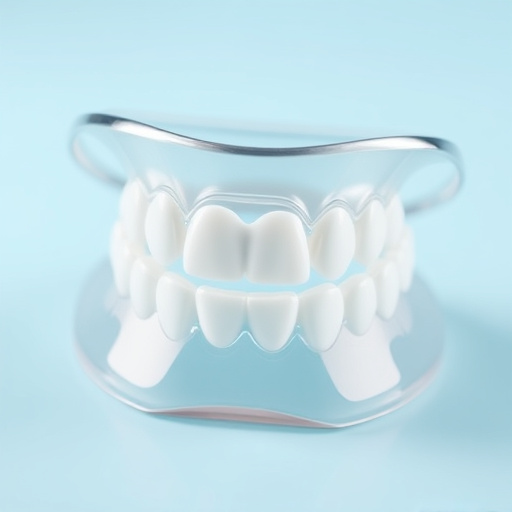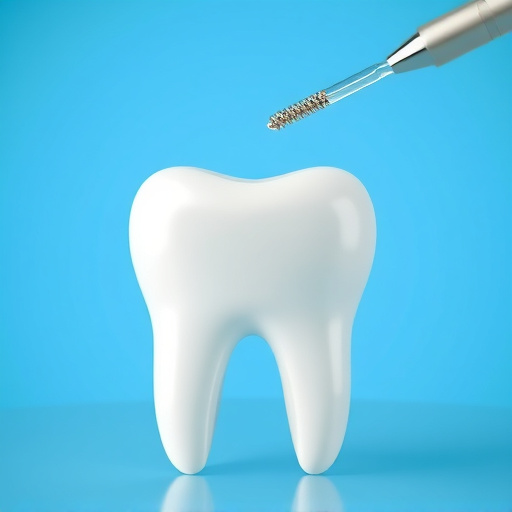Single tooth implants offer a popular, effective solution for missing teeth, enhancing chewing function, aesthetics, and durability compared to bridges or dentures. This minimally invasive procedure involves surgically placing a titanium post into the jawbone, fusing with bone to support a custom-made dental crown. Local anesthesia provides a comfortable experience during placement, keeping patients awake and reducing anxiety. The process starts with a consultation, followed by incision, titanium post insertion, osseointegration, abutment attachment, and final restoration with a custom-made crown.
Considering single tooth implants? Local anesthesia can make the placement process comfortable. This innovative procedure offers a permanent solution for tooth loss, allowing you to restore your smile and oral function. In this guide, we’ll explore what single tooth implants are, delve into the role of local anesthesia, and provide a step-by-step overview of the placement process, ensuring a clear understanding for those considering this transformative treatment.
- Understanding Single Tooth Implants
- Local Anesthesia: The Numbed Approach
- Placement Process: Step-by-Step Guide
Understanding Single Tooth Implants

Single tooth implants are a popular and effective solution for replacing missing teeth. Unlike traditional bridges or dentures, which involve multiple adjacent teeth, single tooth implants provide a direct replacement for a single lost tooth. This minimally invasive procedure involves surgically placing a small titanium post into the jawbone, which then fuses with the bone to create a sturdy foundation for a custom-made dental crown.
Understanding this process is crucial when considering emergency dental care or general dentistry services. Implants offer several advantages, including improved chewing function, enhanced aesthetics, and long-term durability. They also help maintain the natural contour of your smile and prevent bone loss, which can occur when teeth are missing. Whether you need immediate attention for an emergency tooth issue or routine general dentistry services, discussing single tooth implants with a qualified dental professional is a smart step towards restoring your oral health and confidence.
Local Anesthesia: The Numbed Approach

Local anesthesia plays a pivotal role in ensuring a comfortable experience during single tooth implant procedures. Unlike traditional surgeries that often require general anesthesia, dental implants placed under local anesthetic only target the specific area where the procedure is being performed. This means patients remain conscious and awake throughout, minimizing anxiety and allowing for better communication with the dentist.
The process typically involves injecting a numbing agent into the gum tissue surrounding the missing tooth’s socket. This quickly desensitizes the area, providing pain-free conditions for the implant placement. Local anesthesia is highly effective in managing discomfort during critical stages of restorative dentistry, making it a preferred choice in family dentistry practices that offer advanced single tooth implant solutions.
Placement Process: Step-by-Step Guide

The placement process for single tooth implants is a precise procedure designed to restore your smile effectively. It begins with an initial consultation where the dentist assesses your oral health, takes X-rays, and discusses your expectations. If you’re a suitable candidate, the surgeon will make a small incision in the gum tissue to expose the jawbone. They then insert a titanium post into the bone, ensuring it fuses with the bone over several months in a process known as osseointegration.
Once the implant is securely anchored, the dentist attaches an abutment, which serves as a connector. This step prepares the implant for the final restoration. Finally, a custom-made dental crown, designed to match your natural teeth, is attached to the abutment, resulting in a single tooth implant that looks, feels, and functions just like a natural tooth. This entire process can typically be completed within a few visits, offering a convenient and effective solution for missing teeth compared to traditional dental implants or clear aligners, even when dealing with complex cases like wisdom tooth removal.
Single tooth implants offer a modern and effective solution for replacing missing teeth, providing both functionality and aesthetic benefits. With local anesthesia, the placement process can be comfortable and swift, making it an attractive option for those seeking a permanent, natural-feeling dental restoration. This advanced procedure ensures patients can regain their smile and chewing confidence without the discomfort often associated with traditional tooth replacement methods.














